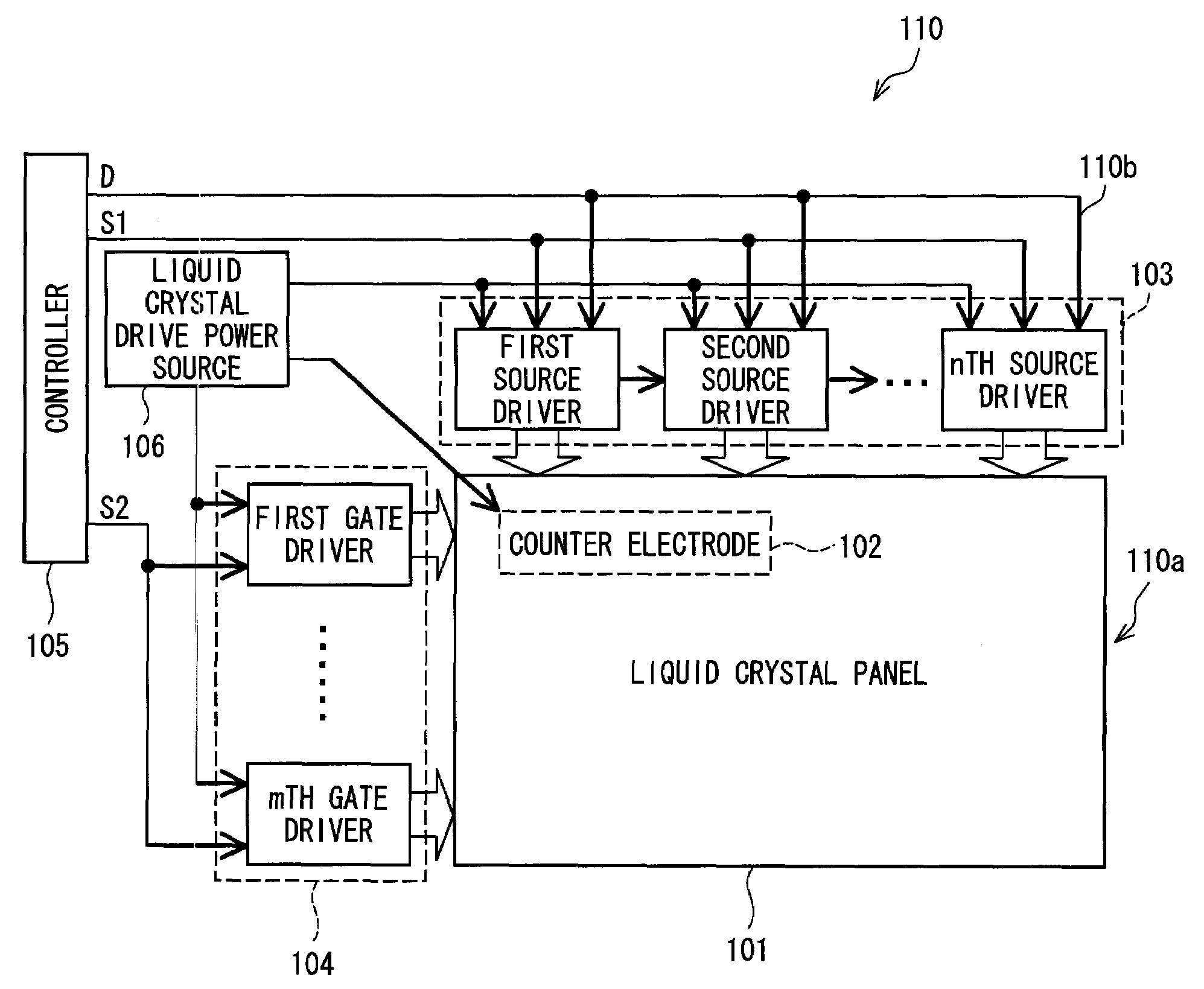Display Apparatus
a technology of display apparatus and display screen, which is applied in the direction of cathode-ray tube indicators, static indicating devices, instruments, etc., can solve the problems of reducing color saturation, increasing circuit size, and increasing the cost of the circuit, so as to prevent the reduction of the color saturation of each reproduced color, improve the display quality, and improve the luminance
- Summary
- Abstract
- Description
- Claims
- Application Information
AI Technical Summary
Benefits of technology
Problems solved by technology
Method used
Image
Examples
Embodiment Construction
[0026]One embodiment of a liquid crystal display according to a display apparatus of the present invention is explained below, with reference to FIGS. 1 through 8. An active matrix system using TFTs (Thin Film Transistors) as switching elements is known as a system capable of performing a display of high definition, among various display types of a liquid crystal display apparatus. As illustrated in FIG. 2, a liquid crystal display apparatus 110 employing the active matrix system includes a liquid crystal display section (display section) 110a and a liquid crystal drive circuit (drive signal outputting section) 110b serving as a liquid crystal driving device that drives the liquid crystal display section 110a.
[0027]The liquid crystal display section 110a includes a TFT-type liquid crystal panel 101. The liquid crystal panel 101 has pixels (dots) arranged in a matrix (lattice). In the present embodiment, for example, pixels are arranged in a matrix of 1024×768 pixels (XGA (eXtended ...
PUM
 Login to View More
Login to View More Abstract
Description
Claims
Application Information
 Login to View More
Login to View More - R&D
- Intellectual Property
- Life Sciences
- Materials
- Tech Scout
- Unparalleled Data Quality
- Higher Quality Content
- 60% Fewer Hallucinations
Browse by: Latest US Patents, China's latest patents, Technical Efficacy Thesaurus, Application Domain, Technology Topic, Popular Technical Reports.
© 2025 PatSnap. All rights reserved.Legal|Privacy policy|Modern Slavery Act Transparency Statement|Sitemap|About US| Contact US: help@patsnap.com



